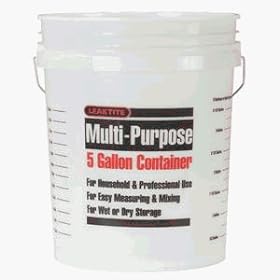I'm using the Coopers DIY Kit with the Lager (ale yeast) Extract. For this batch I don't have a problem with priming as the kit came with sugar tabs, 2/750ml bottle.
However, for the next batch, I'd like to get beyond the expense of these tabs and go with a dextrose prime. If I don't use a bottling bucket and want to go from the primary directly to the bottles, I'm having a process question(s).
I see two options.. one is to use a specific amount of dextrose funneled into the bottle.. but, I'd guess it's not certifiably sterile. The other option I see is to boil up 1C or 1.5C of water and add a specified amount of dextrose.. whatever the proper amount is for ~23L. Then get a large syringe.. such as one used for injecting BBQ seasonings into meats.. and transferring X amount of solution into each bottle before filling.
Is there another method you'd suggest?
Also, If I use the syringe method, what would be the amount of sugar to add to the water such that I can prime about 30 bottles. Guess there must be a formula someplace.
The reason I'm shying away from a bottling bucket is the "remote" possibility of adding oxygen or wild "stuff" that might be floating in the air. I'd like to have my first batch turn out as good as I possibly can for an all extract beer.
Thanks for any suggestions.
However, for the next batch, I'd like to get beyond the expense of these tabs and go with a dextrose prime. If I don't use a bottling bucket and want to go from the primary directly to the bottles, I'm having a process question(s).
I see two options.. one is to use a specific amount of dextrose funneled into the bottle.. but, I'd guess it's not certifiably sterile. The other option I see is to boil up 1C or 1.5C of water and add a specified amount of dextrose.. whatever the proper amount is for ~23L. Then get a large syringe.. such as one used for injecting BBQ seasonings into meats.. and transferring X amount of solution into each bottle before filling.
Is there another method you'd suggest?
Also, If I use the syringe method, what would be the amount of sugar to add to the water such that I can prime about 30 bottles. Guess there must be a formula someplace.
The reason I'm shying away from a bottling bucket is the "remote" possibility of adding oxygen or wild "stuff" that might be floating in the air. I'd like to have my first batch turn out as good as I possibly can for an all extract beer.
Thanks for any suggestions.





